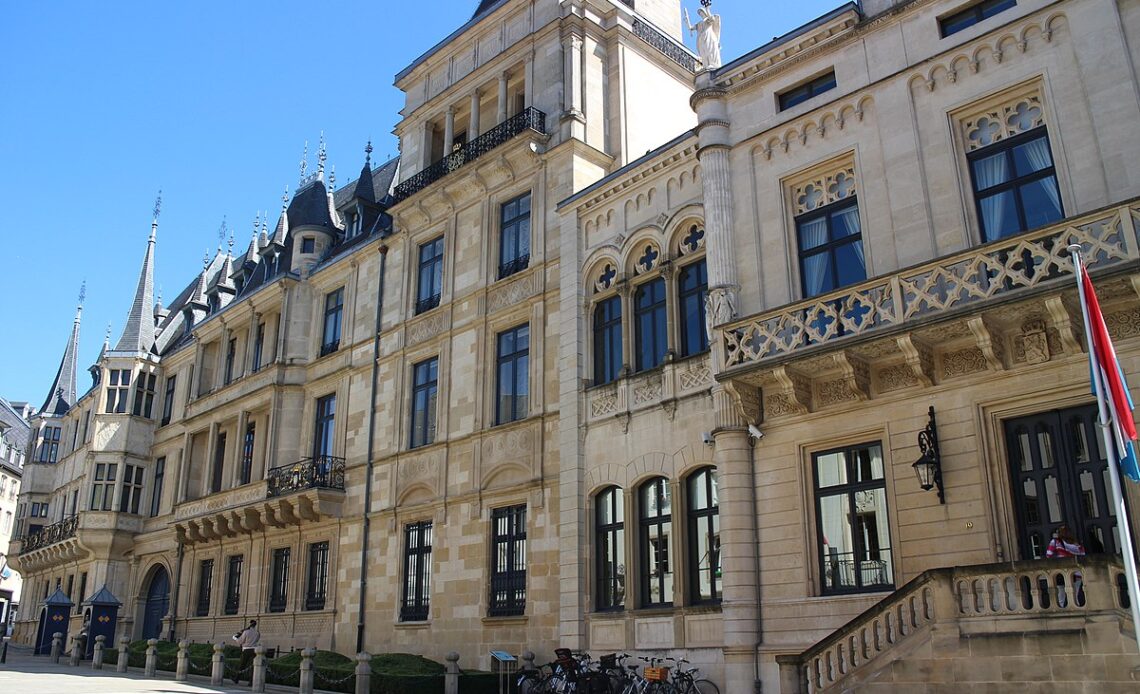
Seventy years ago this spring, a young princess left her palace to marry a handsome heir to a throne. Their families had helped ensure the couple said ‘I do’ while royalty from around the continent gathered to see them exchange vows. It was a pattern followed by dynasties for centuries. And yet in this post war wedding, where the groom had fought to free his country and the bride had endured terror at the hands of enemy captors, modernity crept in. When Jean of Luxembourg and Josephine Charlotte of Belgium married, in April 1953, there were reports that both had hoped to have more say in who they spent their lives with. This wedding went ahead amidst whispers that royal rules had taken precedence over romance. Yet the union endured.
The decision of Jean, then Hereditary Grand Duke of Luxembourg, and Josephine-Charlotte, sister of the King of the Belgians to marry surprised just about nobody. Rumours that the two would wed were nothing new and the match was said to be the long held wish of the bride’s grandmother, Queen Elisabeth, and the groom’s mother, Grand Duchess Charlotte of Luxembourg. The families had close ties – the Grand Duchess was among Josephine-Charlotte’s godmothers. On December 26 1952, after weeks of press speculation, the couple confirmed they were engaged and a spring wedding was set.
Embed from Getty ImagesIn the intervening months, several papers reported that this was far from a fairytale romance and the couple had been told to do what princes and princesses had done for centuries – marry for dynastic reasons rather than love. But Jean and Josephine-Charlotte kept to another well worn royal path with a growing roster of royal events to introduce them publicly as a couple. Royal wedding fever mounted and huge crowds packed Luxembourg City on April 9th 1953, the day the couple married.
Embed from Getty ImagesAs required in Luxembourg and in Belgium, the couple wed in a civil ceremony first. This legal union, contracted at the Grand Ducal Palace, was followed by a religious ceremony. The bride arrived at the Cathedral of Notre Dame with her father, King Leopold III, who had abdicated the Belgian throne just a few years earlier. Her brother and new king, Baudouin, waited inside. Meanwhile, the groom had his mother, Grand Duchess Charlotte, at his side before the couple made their way to the altar for their marriage ceremony.
Embed from Getty ImagesPrincess Josephine-Charlotte was a popular figure in the press and interest in her dress was intense. She chose a gown made of white silk organza with a high, ruffled neckline and long sleeves. The full skirt gave way to a fourteen foot long train covered in Bruges lace. The bride’s veil also featured Belgian lace trim. For the ceremony, the bride wore an all diamond tiara which she swapped for another all diamond diadem, known as the Belgian Scroll tiara, for official photos. Her wedding bouquet included stephanotis which, in the language of flowers, denotes marital happiness.
However, rumours that the union was less than blissful had continued and weren’t helped by the bride appearing pale and tearful throughout the wedding. She almost fainted at one point with her new husband supporting her. By the time the couple emerged, to cheers from a crowd of around 140,000 people, the new Hereditary Grand Duchess of Luxembourg was all smiles again and was cheered back to the Grand Ducal Palace where the reception took place for hundreds of guests.
Embed from Getty ImagesA family soon followed. Their first child, Marie-Astrid, was born in February 1954 and a son, Henri, followed in April 1955, arriving just days after their second wedding anniversary. They welcomed twins, Jean and Margaretha, in 1957 and their family was completed in 1963 with the arrival of a third son, Guillaume. Despite the rumours of this being a dynastic marriage, Jean and Josephine-Charlotte appeared happy together.
They became Grand Duke and Duchess in 1964 when Jean’s mother abdicated in his favour and Jean ruled for 36 years before stepping aside for his eldest son in 2000. Josephine-Charlotte died in 2005 and Jean passed away in 2019.
This wedding has several claims on royal history. It was a dynastic match that produced a sovereign but more than that, it was the first time the press had queried whether the prince and princess brought together were truly happy with the path picked for them. It was a change from the royal norm but the union formed that spring day, seventy years ago, became an enduring partnership that made its mark on European royalty.

